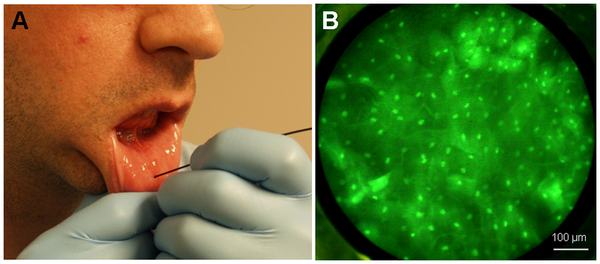Consumer digital camera used for cancer detection
June 25, 2010
Using a consumer digital camera with a small bundle of fiber-optic cables attached, Rice University biomedical engineers and researchers from the University of Texas M.D. Anderson Cancer Center have created an inexpensive device that is powerful enough to let doctors easily distinguish cancerous cells from healthy cells simply by viewing the LCD monitor on the back of the camera.
When imaging tissues, Richards-Kortum’s team applied a common fluorescent dye that caused cell nuclei in the samples to glow brightly when lighted with the tip of the fiber-optic bundle. Three tissue types were tested: cancer cell cultures that were grown in a lab, tissue samples from newly resected tumors, and healthy tissue viewed in the mouths of patients.
“Consumer-grade cameras can serve as powerful platforms for diagnostic imaging,” said Rice’s Rebecca Richards-Kortum, the study’s lead author. “Based on portability, performance and cost, you could make a case for using them both to lower health care costs in developed countries and to provide services that simply aren’t available in resource-poor countries.”
Richards-Kortum said software could be written that would allow medical professionals who are not pathologists to use the device to distinguish healthy from nonhealthy cells. The device could then be used for routine cancer screening and to help oncologists track how well patients were responding to treatment.
More info: Rice University news, A Fiber-Optic Fluorescence Microscope Using a Consumer-Grade Digital Camera for In Vivo Cellular Imaging (free access)
